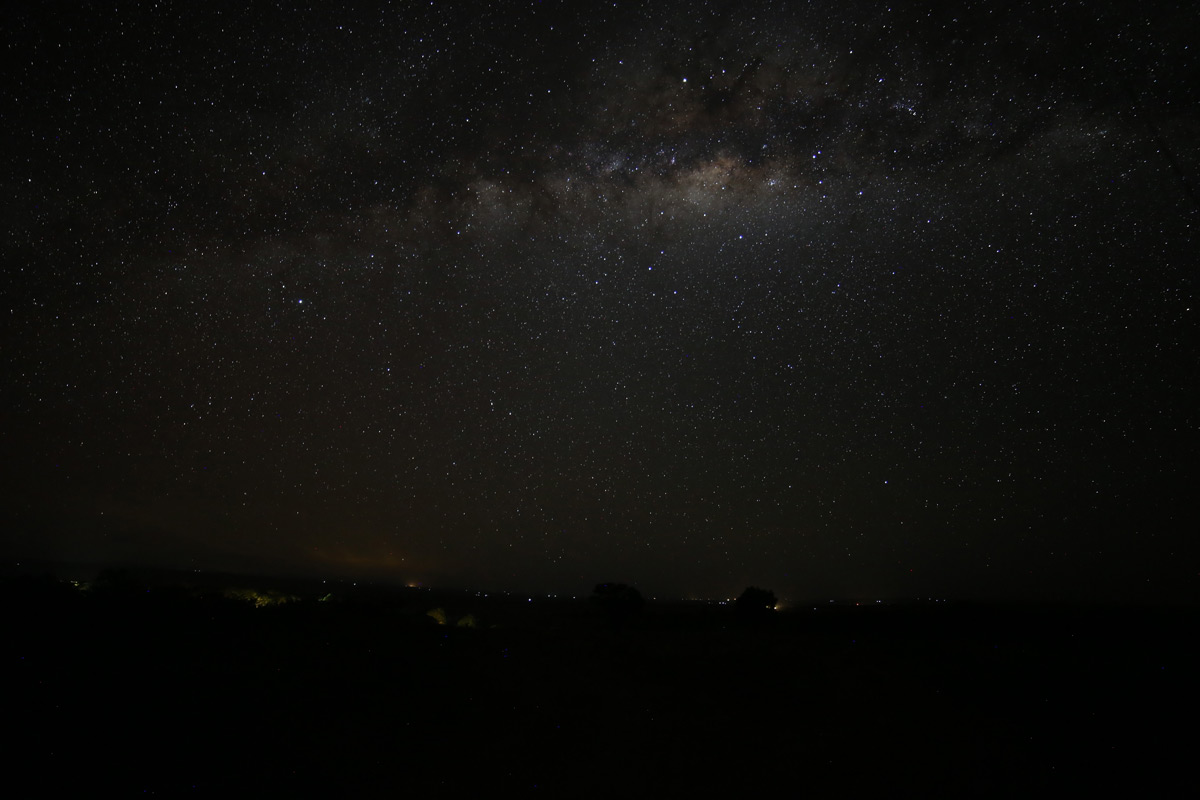Dark Sky Safari
25 July 2017 | The Mara | George Tucker

The Angama Mara guides and I stared intently into the dark, determined to locate a pair of lions. These lions posed no threat because they were not nearby in the bush, but incredibly far away in the Maasai Mara night sky. With the help of smartphone star map apps, our group quickly pinpointed the constellations of Leo and Leo Minor with the beam of a green laser. We found more members of the celestial menagerie including Scorpius, the scorpion; Lupus, the wolf; Corvus, the crow; and Musca, the fly, while keeping alert for any terrestrial creatures that might wander into our training session. Thanks to Angama Mara’s location near the equator, during the course of the year all 88 constellations can be seen. In two hours we identified twenty constellations from Ursa Minor, the little bear, in the north to Crux, the Southern Cross, in the south. This took considerable effort because the sky over the Mara is extremely dark allowing thousands of stars to be seen thus making the patterns defining the constellations difficult to recognise.
But thanks to this dark sky we observed some seldom-seen features of the night sky including the shape of the Milky Way, the visible manifestation of the billions of stars in our galaxy, and the dark lanes of dust that interrupt its light. Also visible was the elusive zodiacal light, a pale pyramid of light rising up in the west and remaining visible for several hours after sunset. Occasionally a meteor would flash across the sky bringing cries of “olakira lolkidong’oe”, meaning ‘star with a tail’ in Maa. This provided an opportunity for me to stress to the group that while they now knew the scientific names for many objects in the sky, it was equally important for them to learn from their tribal elders the objects’ significance and their Maa names and thus provide guests with insights into a new aspect of Maasai culture and help preserve their heritage for future generations.

Cloudy nights sent us back into the classroom to review astronomy basics. The guides were particularly interested to learn that because space is so large it takes light a significant amount of time to reach us from the stars. For example, the light from our Sun’s nearest neighbouring star takes more than four years to reach us so when we look at the night sky, we are not just looking out in space but also back in time. If you visit the lodge for your birthday, your guide may be able to show you a star whose light left on its journey to Earth in the year you were born.
On another clear night we watched from the lodge’s deck as the International Space Station, with its five astronauts, sailed overhead. Some guests joined us, and after the satellite passed, the guides enjoyed the opportunity to practice their new skills and treated them to a short tour of the constellations.

Another aim of my visit was to determine how the darkness of the Mara’s sky compared to other observing locations and evaluate its potential to become a Dark Sky Sanctuary, a designation conferred on places with pristine night skies by the International Dark Sky Association. I used a Sky Quality Meter, a device that measures sky brightness, and took photographs to provide additional documentation. The meter readings showed that the Mara’s sky is one of the darkest yet measured and would place it in the gold category of Dark Sky Sanctuaries. Hopefully the Mara Conservancy will undertake the application process and become one of these special places.
TAGGED WITH: Maasai Mara, Training, astronomy, Mara Sky, Night sky, Angama by night



COMMENTS (2)
Bill Ross
July 25, 2017Wonderful post.
REPLYExcited to visit in the future.
When is the best time to come? To see animals, to see the sky?
Thank-you
Nicky Fitzgerald
July 25, 2017Hi Bill
REPLYDelighted you enjoyed reading this story and thanks so much for getting in touch.
Please come and stay one day – I promise you will not be disappointed in either the stars or the animals.
Happily, the Mara Triangle offers fabulous game viewing 12 months of the year – there simply is never a dull day. As you can see on our website the rates for 2018 for the Standard Season are much better value only because the Great Migration is not in the Mara BUT you do have the Mara all to yourself at much better rates. If your heart is set on seeing the Migration then you need to come July through September/October.
We have beautiful skies year round in the Mara but best to aim for a new moon. We recommend April/May/November (afternoon rain showers) for star months because the rain settles the dust and stargazing is at its best.
I hope I have answered all your questions and look forward to welcoming you to Africa one day soon.
Warm regards
Nicky